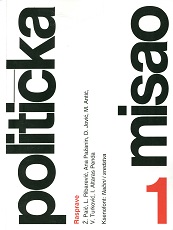Što su kombinirani izborni sustavi?
What are combined electoral systems?
Author(s): Mirjana KasapovićSubject(s): Politics / Political Sciences
Published by: Fakultet političkih znanosti u Zagrebu
Keywords: Combined Electoral Systems; Structural Approach; Outcome-approach; Strategies of Action
Summary/Abstract: Combined electoral systems were in expansion at the end of the 20th century and thus some authors considered them to be the electoral model for the future. Accordingly, there has been an increasing number of academic attempts to define and conceptualise these complex electoral systems. So far, two major interpretative streams emerged: structural (or mechanical) which is linked with Canadian scholars of election studies A. Blais and L. Massicotte, and the outcome-approach, largely developed by American scholars M.S. Shugart and P.M. Wattenberg. However, there is still much to add to these two interpretations. The author argues that a combined electoral system is specific for its combining of two elements: 1) the elections are based on two different levels of voting and of distribution of seats (name-based and list-based) and 2) they develop a specific model of voting – with two votes per each voter (one for an individual candidate and the other for a list). When combined, these two elements create institutional setting for electoral competition, and thus the candidates and the parties are requested to develop more complex electoral strategies than in other types of electoral systems.
Journal: Politička Misao
- Issue Year: L/2013
- Issue No: 01
- Page Range: 87-103
- Page Count: 17
- Language: Croatian

